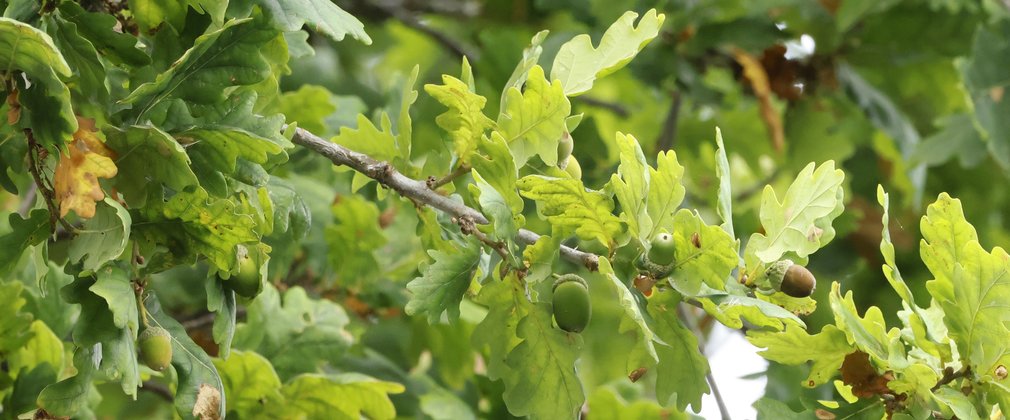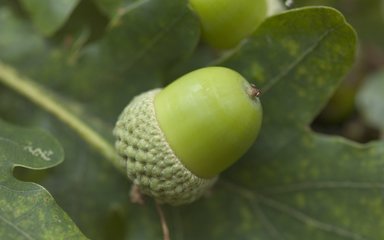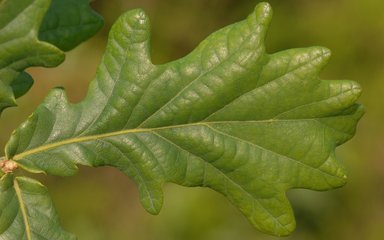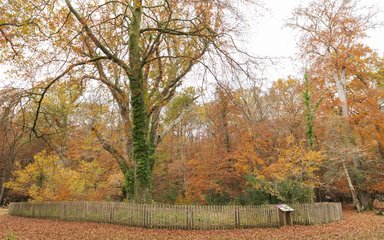
The mighty English oak has been an important tree in England since pre-historic times, when it formed part of the vast wildwood that stretched across Europe. Find out more about this tree species, from its appearance to its many uses.
Oak facts and figures
- most English oak (Quercus robur) don't produce acorns until they are over 40 years old.
- a broad, spreading oak can grown up to 30 metres tall.
- oaks can live up to a thousand years.
- they can hybridise with a closely related native species, sessile oak (Quercus petraea).
- hugely important for their value to wildlife, oaks can support over 280 different species of insects.

Oak identification tips
Heading out into the forest? Here are the top things to look out for to help you spot oak:
- bark: the tree's smooth, silvery-brown bark becomes rugged and fissured with age.
- leaves: oak leaves have five or six rounded lobes and are longer than they are wide. The green turns to yellowy-brown in autumn.
- seeds: acorns are shiny fruit, held tightly in textured cups. They are carried on long stalks, known as 'peduncles'.
How oak is used
Steeped in history and legends, oak wood has been used for centuries. It can be found in the structures of our most historic buildings and was widely felled for the shipbuilding industry. One ship would require the timber from hundreds of oak trees.
Historically oak was also coppiced to produce charcoal. The high tannins in the bark made it useful for leather tanning, and the sawdust used for smoking food.
Oak's strong and durable timber means today it's still one of the most widely-used hardwoods in the country for interior joinery and furniture making.

Did you know? In Savernake Forest you can see where pollarded oaks were used as boundary trees. The Big Belly Oak here may have seen 1,000 years of history.
English oak and future forestry
Our oldest oaks are our most important trees for the biological, environmental and the historic value of forests. It's important we look after them, and we're committed to protecting our ancient and veteran trees. Each tree is assessed and has a management plan sympathetic to their individual and unique character. We also record potential 'future veterans' to ensure existing veteran trees will be replaced in hundreds of years to come.
Acute oak decline is an emerging disease of oak trees that can kill mature oaks. Oak processionary moth is another threat to oak trees in south-east England, which can strip the trees of their leaves and make them vulnerable to other pests and diseases. We're making sure to monitor oak woodlands for signs of pests or disease and work with experts to manage outbreaks and protect the future of this iconic tree.
Oaks can suffer in areas prone to summer droughts, which may increase in our changing climate. In Alice Holt Forest we've been growing young oak from acorns sourced in central France. These trees are used to warmer conditions, where the climate today is similar to predicted conditions in the south of England. This means our oak woodlands will have a better chance of thriving in the future.


